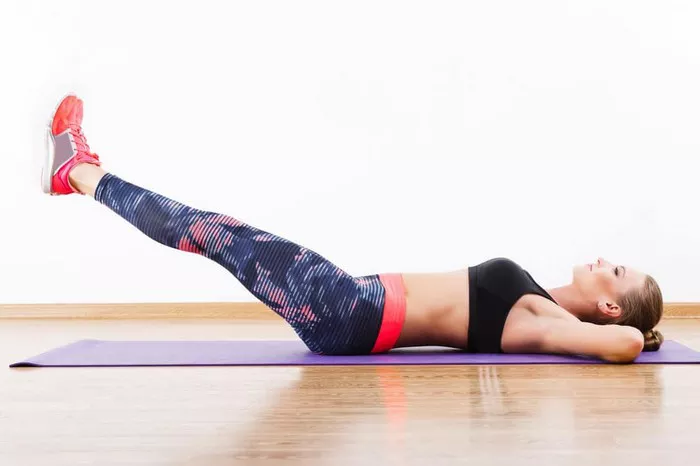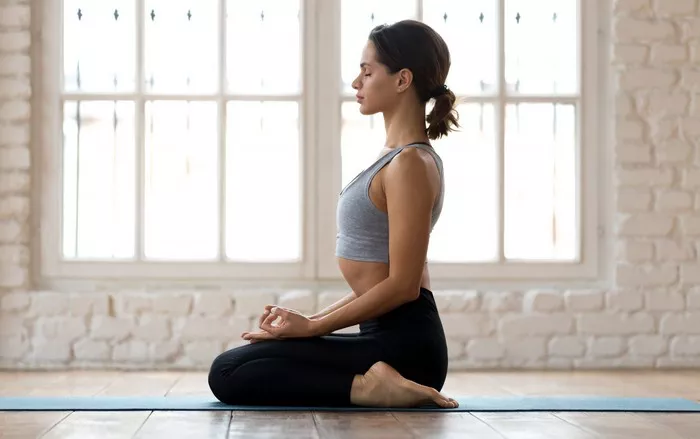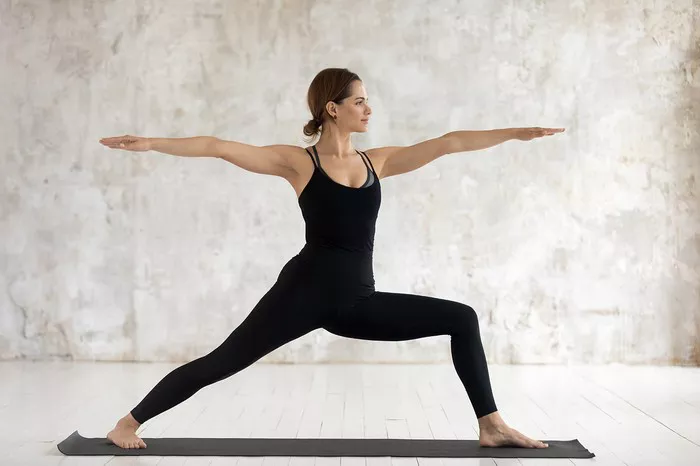Shoulderstand, known in Sanskrit as Sarvangasana, is a highly regarded posture in yoga. It is considered one of the classic asanas in traditional yoga practices and is often included in various styles of yoga for its numerous benefits. However, understanding its level of difficulty and the prerequisites for practicing it can be complex for both beginners and seasoned practitioners. In this article, we will dive deep into the Shoulderstand pose, its classification in terms of difficulty, its benefits, and the key factors to consider before incorporating it into your yoga practice.
Understanding Shoulderstand: The Basics
Shoulderstand is a seated inversion pose that requires a high degree of stability and control over the body. In this pose, the body is supported by the shoulders, with the legs extending upward, creating a straight line from the shoulders to the feet. The arms are typically placed on the back to support and stabilize the posture. Shoulderstand is often considered a “restorative” inversion due to its calming effects on the mind and body.
Step-by-Step Breakdown of Shoulderstand:
- Start by lying flat on your back with your arms at your sides, palms facing down.
- As you inhale, lift your legs off the ground, bringing them to a 90-degree angle with your torso.
- Support your lower back with your hands, guiding the legs upward toward the ceiling.
- Once the legs are extended straight up, shift your weight onto your shoulders, keeping your neck long and relaxed.
- Engage your core muscles to maintain the pose and ensure the spine stays aligned.
- Keep your legs firm and straight while lifting through your heels.
- Hold for 15-30 seconds or as long as you feel comfortable, and then slowly lower your legs back to the mat with control.
The Level of Difficulty of Shoulderstand
Determining the level of difficulty of a yoga pose is subjective, as it can vary depending on an individual’s body type, flexibility, strength, and experience. Generally speaking, Shoulderstand is classified as an intermediate or advanced pose in most yoga styles. However, many yoga teachers and practitioners suggest that it is suitable for individuals who have a solid foundation in basic asanas and who possess good body awareness and control.
Key Factors that Contribute to the Difficulty of Shoulderstand:
Core Strength and Stability: To hold the Shoulderstand pose, it is essential to engage the core muscles to maintain balance and support the body. Core strength allows the practitioner to stabilize the pelvis and legs, keeping the body aligned and preventing strain on the neck and spine.
Shoulder and Upper Back Strength: Since Shoulderstand relies heavily on the support of the shoulders and upper back, a strong upper body is necessary. A lack of strength in these areas can lead to discomfort and instability while attempting the pose.
Neck Flexibility and Support: Unlike many yoga poses, Shoulderstand requires the practitioner to place weight on the shoulders while the neck remains in a neutral position. It is crucial to avoid compressing the neck, which can lead to injury. This is why alignment is critical in Shoulderstand, as improper neck positioning may cause strain.
Flexibility in the Spine: A flexible spine will help you maintain the proper alignment during Shoulderstand. Without this flexibility, it is difficult to maintain the integrity of the pose and hold it for an extended period.
Balance and Coordination: Shoulderstand requires precise coordination between different parts of the body, such as the legs, core, and shoulders. It also requires a sense of balance as you adjust your body to stay upright while inverted.
Beginner and Advanced Variations of Shoulderstand
For beginners, Shoulderstand may appear intimidating or out of reach due to the physical demands of the pose. However, it is possible to work up to the full pose with modifications and variations. Understanding the right approach and progression is key to making the pose more accessible.
Beginner-Level Variations:
Supported Shoulderstand with Blocks: Using yoga blocks under the shoulders can provide extra support and help beginners feel more stable in the pose. This reduces the pressure on the neck and lower back, allowing the body to focus on strength and alignment.
Legs Up the Wall Pose (Viparita Karani): This is a gentler inversion where the legs are placed against the wall while lying on the floor. It helps build awareness of the inverted position and begins to condition the body for the full Shoulderstand.
Plow Pose (Halasana): While this is not a direct variation of Shoulderstand, practicing Plow Pose can help increase flexibility in the spine and hamstrings, which are essential components of a successful Shoulderstand. It also builds strength in the core and upper back.
Intermediate and Advanced Variations:
Full Shoulderstand (Sarvangasana): This is the classic version of the pose, with the legs fully extended above the body. It requires full control over the body and a deep understanding of alignment.
One-Legged Shoulderstand: As you gain confidence in the pose, lifting one leg at a time can be a great way to challenge balance and core strength. The other leg remains straight up while the other leg slowly extends toward the ceiling.
Shoulderstand with Lotus Legs (Padma Sarvangasana): This is a highly advanced variation of the pose, where the legs are crossed into a lotus position while in Shoulderstand. This requires both flexibility and a high degree of control in the hips, knees, and spine.
Benefits of Shoulderstand
Shoulderstand offers a wide range of physical, mental, and emotional benefits, making it a powerful addition to your yoga practice. Some of the key benefits include:
1. Improved Circulation
Shoulderstand is an inversion pose, meaning that it causes blood to flow in the opposite direction. This inversion promotes better circulation and helps to remove metabolic waste from the body. By allowing the heart to pump more efficiently, Shoulderstand encourages blood to flow toward the head, revitalizing the brain and upper body.
2. Stronger Core and Upper Body
The pose engages the core muscles (including the abdominals and lower back), as well as the shoulders and arms. This strengthens the entire upper body and builds muscle endurance. Over time, Shoulderstand can significantly improve overall strength and stability.
3. Relieves Stress and Anxiety
The inversion in Shoulderstand has a calming effect on the nervous system. As a restorative pose, it helps reduce stress and anxiety by encouraging deep breathing and relaxation. This creates a sense of mental clarity and tranquility.
4. Improved Flexibility
Practicing Shoulderstand can help improve flexibility in the neck, spine, and shoulders. By regularly practicing this pose, practitioners can experience better posture, reduced tension, and an overall increase in mobility.
5. Enhances Thyroid and Endocrine Function
Inversions like Shoulderstand stimulate the thyroid gland and can have a positive effect on the endocrine system. This is believed to help regulate metabolism and maintain hormonal balance.
6. Improves Digestion
By compressing the abdominal organs, Shoulderstand can help stimulate digestion. This can lead to better elimination and reduce symptoms of bloating or indigestion.
7. Boosts Mental Focus
The need for concentration, balance, and coordination during Shoulderstand helps improve mental clarity and focus. It trains the mind to be present and attentive, which can carry over into other areas of life.
Key Safety Considerations
Although Shoulderstand has numerous benefits, it is not suitable for everyone, especially those with certain medical conditions. Before attempting Shoulderstand, consider the following safety precautions:
Neck Issues: If you have a history of neck injuries or discomfort, Shoulderstand may place excessive strain on your neck and exacerbate the problem. Always maintain a neutral neck position, and if in doubt, consult a healthcare provider.
Spinal Issues: If you have issues with your spine (e.g., herniated discs or scoliosis), it may be difficult to maintain the proper alignment in Shoulderstand. This can lead to injury or further complications.
High Blood Pressure or Heart Conditions: Inversions can increase pressure in the head and affect circulation. If you have high blood pressure, heart conditions, or are pregnant, it’s advisable to avoid Shoulderstand or seek professional guidance before attempting it.
Practice with Proper Alignment: Proper technique and alignment are essential in preventing injury and maximizing the benefits of Shoulderstand. Always practice under the guidance of a skilled instructor to ensure safety.
Conclusion
Shoulderstand is an advanced yoga pose that offers a variety of physical and mental benefits. While it may be challenging for beginners, with time, dedication, and the right preparation, it can be incorporated into a practice. By building strength, flexibility, and balance over time, practitioners can master the pose and enjoy the numerous health benefits it offers. Always approach Shoulderstand with caution, and prioritize proper alignment to avoid strain or injury. For those seeking a transformative and restorative inversion pose, Shoulderstand is an excellent addition to any yoga practice.
Related Topics:























